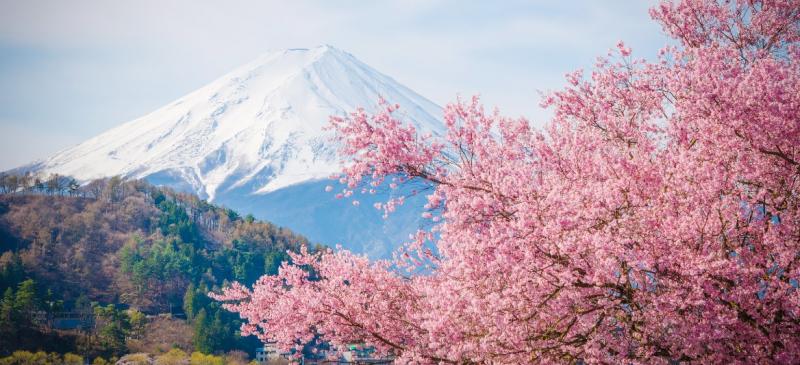
When and Where to See Japanese Cherry Blossom
From the rolling lavender fields of Provence to the motley tulips of Amsterdam; the crimson crunch of a New England autumn to the butter yellow daffodils of Welsh valleys, nature has always been the inimitable queen of peacocking. But nowhere is an annual floral crescendo so entwined with a country’s identity and beliefs as in the sakura season which sweeps the Japanese archipelago, lingering for a few fleeting weeks in each destination as every blush pink bloom heralds the arrival of spring. Keen Japanese cling to their television sets, eagerly watching the televised forecast – known as the ‘cherry blossom front’, like some herbaceous pink army marching northward – that signals the onset of the ancient Japanese spring tradition of hanami. Literally translated as ‘looking at flowers’, tottering grandmothers, macho young office workers and everyone in between flock as if by clockwork to picnic (and drink) in the fluttery shadow of a cherry tree, while even the likes of McDonalds unveil plum-seasoned fries, pink-dyed buns and Sakura Fizz Floats (essentially candyfloss-hued Sprite with a dollop of whipped cream). As described by one of Japan’s best-known and appreciated haiku poets, Kobayashi Issa: “in the cherry blossom’s shade, there’s no such thing as a stranger”.
Sakura has a deep-seated symbolic significance for the Japanese – its short blooming period represents the transient fragility of life; that every beautiful beginning must have an end. Known as ‘wabi-sabi’, this philosophy on the impermanence and imperfection of our existence derives from Buddhism, and manifests itself in everything from traditional Japanese tea ceremonies, contorted bonsai trees and tranquil zen gardens. Beginning in southerly Okinawa in early January, before travelling north to reach the likes of Kyoto and Tokyo by early April, the blossom finally arrives at the northernmost stretches of Hokkaido in early to mid-May: but anything from a heavy downpour or a particularly warm winter can and does alter an already fickle schedule. Several of the best places to catch the floral wave are Ueno Park in Tokyo – an eternal favourite for picnicking Tokyoites – or Nara Park near Osaka, with its roaming speckled white and tan deer like something from a girlish fable. Kinkaku-ji (the Golden Pavilion) in Kyoto is a postcard-perfect snapshot of an ancient Japanese temple fringed with pink, while the northern shore of Lake Kawaguchiko affords vistas of pink snowflakes floating ethereally in the commanding presence of Mount Fuji – the iconic image of Japan.
Share this article:



















